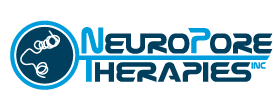News
Neuropore publishes paper describing use of retinal imaging for evaluating potential therapies for Parkinson’s disease and other synucleinopathies
San Diego, California, August 4, 2016 -- Neuropore Therapies, Inc. has published a report in Nature’s Scientific Reports describing retinal imaging evaluations of a transgenic animal model of Parkinson’s disease/Dementia with Lewy Bodies. There is growing consensus that retinal pathology can reflect neuropathology in the brain, and non-invasive retinal imaging could be used to evaluate pathology and evaluate potential therapeutics in preclinical animal models and patients with neurodegeneration. The report entitled, “Longitudinal live imaging of retinal α-synuclein::GFP deposits in a transgenic mouse model of Parkinson’s Disease/Dementia with Lewy Bodies” was co-authored by Neuropore Senior Director of Neuroscience and In Vivo Pharmacology, Dr. Diana L. Price in collaboration with researchers at UC San Diego School of Medicine. The report describes findings that support the use of non-invasive retinal imaging in animal models as a tool to monitor the fate of α-synuclein accumulation in the CNS and to evaluate the effects of putative therapeutic agents targeting α-synuclein for Parkinson’s disease and other synucleinopathies.
“The results of this collaborative effort between Neuropore and UC San Diego researchers demonstrates our commitment to the development and use of translational biomarkers for drug discovery, development and clinical applications,” said Douglas Bonhaus, Chief Operations Officer at Neuropore.
The report can be downloaded at: http://www.nature.com/articles/srep29523
Media and Investor Contact:
Douglas Bonhaus, COO
